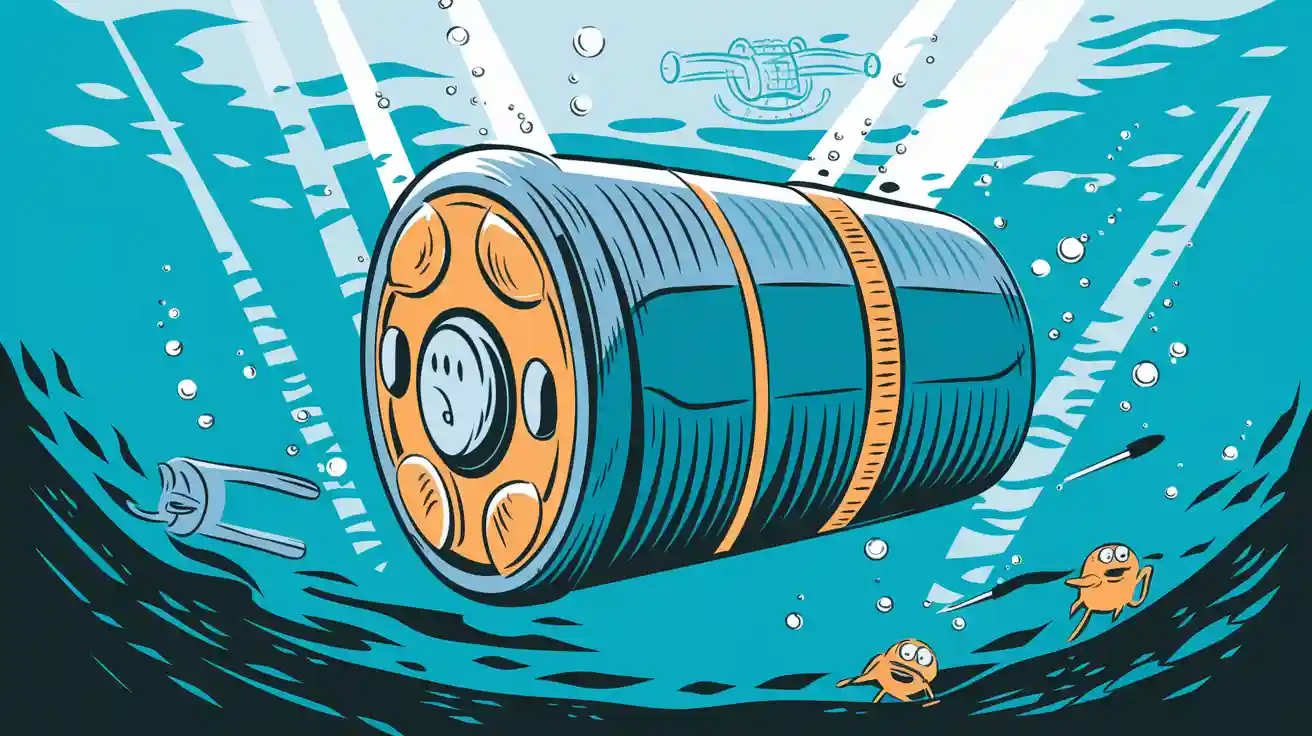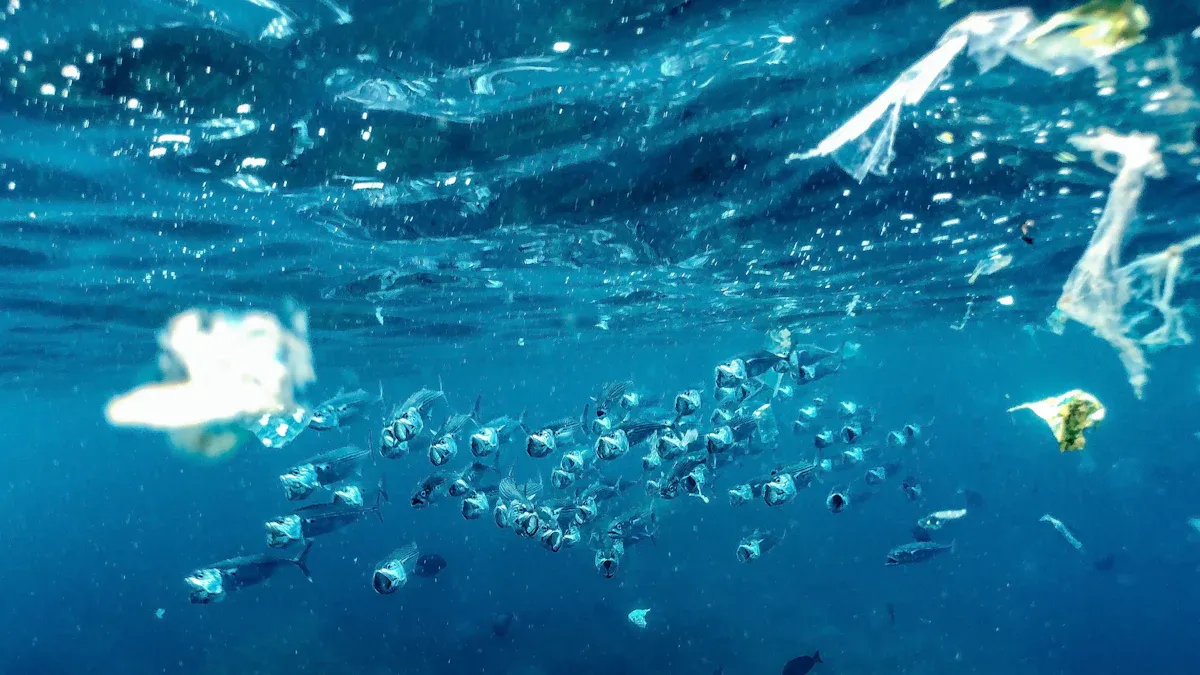
You rely on autonomous underwater vehicles to perform critical underwater survey missions. Their battery systems face constant immersion, exposing them to risks that compromise the safety of lithium batteries. Proper protection ensures the waterproof performance of the UUVs battery pack, even under challenging conditions like high pressure or saltwater exposure. IP67-rated designs and lithium battery safety certifications safeguard your mission.
Key Takeaways
Waterproofing keeps water out of UUV batteries. This stops damage and mission problems.
Using better seals and rust-proof materials makes batteries last longer. It also saves money and time.
Checking waterproofing often helps find weak spots early. This keeps underwater work safe and dependable.
Part 1: Risks of Inadequate Waterproofing
1.1 Impact on the Waterproof Performance of the UUVs Battery Pack
You depend on the waterproof performance of the UUVs battery pack to ensure uninterrupted underwater operations. When waterproofing fails, water infiltrates the battery housing, compromising its integrity. This intrusion can degrade insulation, short-circuit electrical components, and reduce the battery’s efficiency. Even minor leaks can lead to significant performance drops, affecting the UUV’s ability to complete its mission.
The underwater environment amplifies these risks. Pressure at greater depths forces water into even the smallest gaps, making inadequate sealing a critical issue. Without proper waterproofing, batteries face constant exposure to moisture, which accelerates wear and tear. You must prioritize robust waterproofing solutions to maintain the battery pack’s reliability and performance in challenging underwater conditions.
1.2 Safety Hazards from Water Ingress
Water ingress poses serious safety concerns for UUV batteries. When water contacts lithium-based battery cells, chemical reactions can occur, leading to short-circuiting, overheating, swelling, or even thermal runaway. These reactions not only damage the battery but also create potential hazards for the UUV and its surroundings.
In extreme cases, compromised batteries can release toxic gases or catch fire, endangering personnel and equipment. You cannot afford to overlook these risks, especially in underwater environments where emergency interventions are limited. Proper waterproofing acts as a safeguard, preventing water from reaching sensitive components and ensuring the safety of the UUV during operations.
Tip: Regular inspections and maintenance of seals and enclosures can help you detect vulnerabilities early, reducing the likelihood of water ingress and its associated hazards.
1.3 Operational Downtime and Increased Costs
Inadequate waterproofing leads to operational downtime, which disrupts mission schedules and increases costs. When water damages the battery pack, repairs or replacements become necessary. These processes take time and resources, delaying critical underwater tasks.
You also face higher long-term expenses due to frequent maintenance and reduced battery lifespan. A poorly waterproofed battery pack requires more frequent replacements, driving up operational costs. By investing in effective waterproofing solutions, you minimize downtime and extend the battery’s durability, ensuring smoother and more cost-efficient operations.
Note: Waterproofing is not just a technical requirement; it is a cost-saving measure that protects your investment in UUV technology.
Part 2: Challenges of Underwater Environments

2.1 High Pressure and Depth-Related Risks
Underwater environments exert immense pressure on UUV battery packs, especially at greater depths. You must account for this pressure when designing waterproofing solutions. High-pressure conditions can compress seals and gaskets, causing them to fail. Even microscopic gaps can allow water to infiltrate the battery housing.
Pressure increases exponentially with depth, making it essential to use materials that withstand extreme forces. Advanced sealing technologies and reinforced enclosures help you mitigate these risks. Without these measures, battery packs face structural damage, compromising their performance and reliability during underwater missions.
2.2 Temperature Fluctuations and Material Stress
Underwater conditions often involve significant temperature changes. These fluctuations cause materials to expand and contract, leading to stress on seals and enclosures. You must select materials with high thermal stability to prevent cracks or deformation.
Temperature shifts also affect battery efficiency. Extreme cold can reduce energy output, while heat accelerates wear and tear. Proper waterproofing ensures that battery packs remain insulated from external temperature changes, maintaining consistent performance.
Tip: Regular testing in simulated underwater environments helps you identify vulnerabilities caused by temperature stress before deployment.
2.3 Corrosive Effects of Saltwater
Saltwater poses a unique challenge due to its corrosive properties. Corrosion can degrade battery components, reducing their lifespan and reliability. You must use corrosion-resistant materials and coatings to protect sensitive parts.
Saltwater exposure accelerates wear, especially in unprotected areas. Waterproofing solutions that include anti-corrosion measures ensure that battery packs remain operational even in harsh underwater conditions.
Note: Investing in corrosion-resistant designs reduces maintenance costs and extends the durability of your UUV batteries.
Part 3: Benefits of Proper Waterproofing

3.1 Enhanced Waterproof Performance of the UUVs Battery Pack
Proper waterproofing significantly improves the performance of UUV batteries in underwater environments. By preventing water ingress, you ensure that the battery pack operates efficiently, even under high-pressure conditions. Advanced sealing technologies and corrosion-resistant materials create a robust barrier against moisture, maintaining the integrity of the battery housing.
3.2 Extended Battery Lifespan and Durability
Waterproofing directly contributes to the longevity and durability of UUV batteries. By shielding sensitive components from moisture and corrosion, you reduce wear and tear, extending the battery’s operational lifespan. This durability minimizes the need for frequent replacements, saving you time and resources.
Saltwater exposure often accelerates the degradation of unprotected batteries. However, waterproofing solutions, such as anti-corrosion coatings and reinforced enclosures, counteract these effects. As a result, your batteries remain functional and reliable for extended periods, even in harsh underwater environments.
Additionally, waterproofing helps maintain consistent energy output over time. Batteries protected against water ingress experience fewer performance fluctuations, ensuring that your UUVs can complete their missions without interruptions.
3.3 Improved Safety and Reliability in Harsh Conditions
Safety is a critical concern when operating UUVs in underwater environments. Waterproofing plays a vital role in preventing hazardous situations caused by water ingress. When water contacts lithium-based batteries, it can trigger chemical reactions that lead to short-circuiting, overheating, swelling, or even thermal runaway. Proper waterproofing eliminates this risk by creating a secure barrier against moisture.
Reliable waterproofing also enhances the overall dependability of your UUVs. By protecting batteries from high pressure, temperature fluctuations, and corrosive saltwater, you ensure that they perform consistently in extreme conditions. This reliability reduces the likelihood of mission failures and enhances the safety of both the equipment and personnel involved.
Tip: Regularly inspect and maintain waterproofing measures to ensure optimal safety and performance during underwater operations.
Part 4: Key Waterproofing Techniques
4.1 Advanced Sealing and Gasket Technologies
You need advanced sealing and gasket technologies to ensure the waterproof performance of UUV battery packs. These solutions create a tight barrier that prevents water ingress, even under high-pressure conditions. Silicone-based gaskets and O-rings offer excellent flexibility and durability, making them ideal for underwater applications. Their ability to maintain a seal despite temperature fluctuations and material stress ensures consistent protection.
Testing plays a crucial role in evaluating the effectiveness of these technologies. Simulated underwater environments help identify vulnerabilities in seals before deployment. Regular inspections allow you to detect wear and replace components proactively, ensuring long-term reliability.
Tip: Choose sealing materials with UL2271 certification to meet industry standards for lithium battery safety and waterproofing.
4.2 Corrosion-Resistant Coatings and Enclosures
Corrosion-resistant coatings and enclosures protect UUV batteries from the damaging effects of saltwater exposure. These solutions shield sensitive components, reducing wear and extending battery lifespan. For example, conformal coatings provide lightweight protection for battery management systems (BMS), while potting and encapsulation offer extreme waterproofing for harsh environments.
Feature | IP-Rated Battery | Enclosure | Conformal Coating | Potting/Encapsulation |
|---|---|---|---|---|
Protection Level | High (IP67/68) | High | Low-Med | Very High (IP68+) |
Primary Use | Integrated | External | BMS/Electronics | Extreme Environments |
Cost | Higher | Moderate | Low | Moderate-High |
Weight/Size Add | Minimal | Significant | Minimal | Very Significant |
Heat Dissipation | Designed-in | Challenging | Minimal Impact | Significantly Impeded |
Repairability | Difficult | Replaceable | Difficult | Impossible |
Enclosures with UL2271 certification provide robust external protection, ensuring compliance with safety standards. While these solutions may add weight, their ability to withstand saltwater exposure makes them indispensable for underwater missions.
4.3 Semi-Solid-State Battery Solutions for Enhanced Safety
Semi-solid-state batteries offer a groundbreaking approach to waterproofing and safety. Unlike traditional lithium-ion batteries, these designs eliminate the risk of micro-short circuits caused by partial water ingress. Even if the UUV’s main hull fails, semi-solid-state batteries prevent dangerous reactions like fires or explosions during charging.
Large Power’s proprietary semi-solid-state batteries demonstrate superior performance in underwater conditions. Their ability to resist water-induced short circuits enhances safety, making them a reliable choice for UUV applications. By integrating these batteries, you ensure that your missions remain secure and uninterrupted, even in extreme environments.
Note: Semi-solid-state batteries with UL2271 certification provide an additional layer of safety, meeting stringent industry standards for underwater operations.
Waterproofing plays a vital role in maintaining the safety and performance of UUV battery packs. It shields batteries from underwater challenges like water ingress and corrosion, ensuring reliable operations. Advanced solutions, such as semi-solid-state batteries, enhance safety and durability. By prioritizing waterproofing, you ensure mission success and reduce operational costs in underwater environments.
FAQ
What is the most effective waterproofing method for UUV batteries?
You should combine advanced sealing technologies, corrosion-resistant coatings, and semi-solid-state batteries. This approach ensures maximum protection against water ingress, pressure, and saltwater corrosion.
How often should you inspect waterproofing measures?
Inspect waterproofing components before every deployment. Regular checks help you identify wear or damage early, ensuring consistent performance and safety during underwater operations.
Can waterproofing improve battery lifespan?
Yes, waterproofing prevents water ingress and corrosion. This protection reduces wear and tear, extending the operational life of your UUV batteries significantly.
Tip: Always use UL2271-certified materials for enhanced safety and compliance with industry standards.






